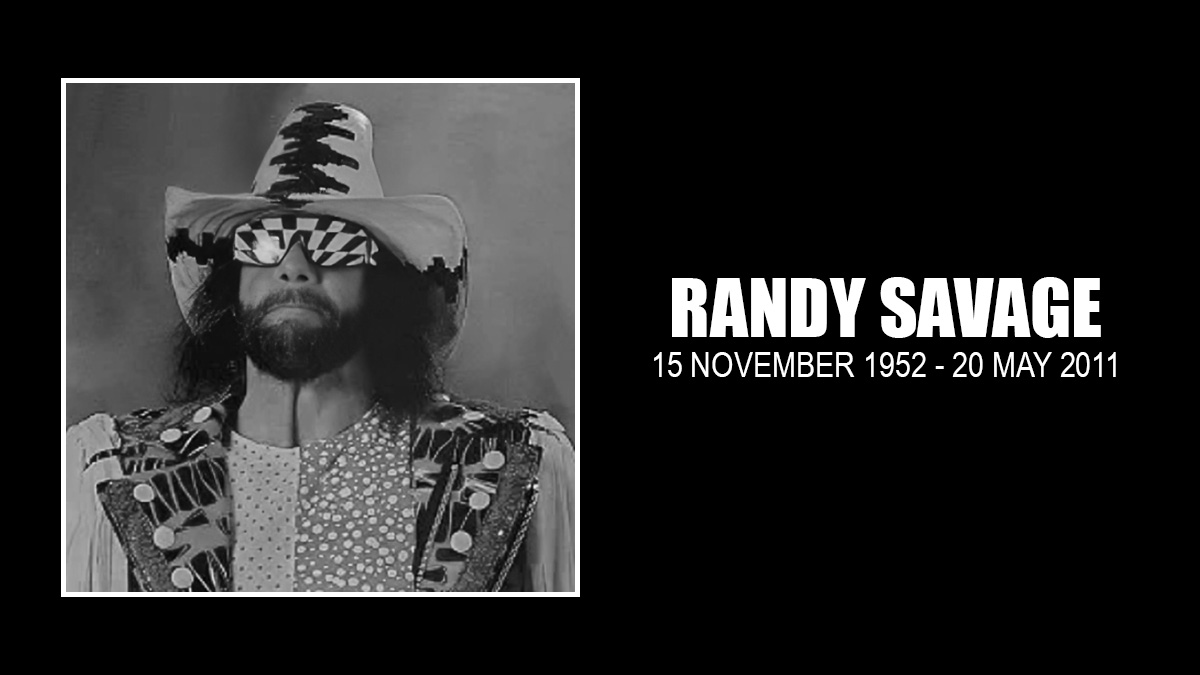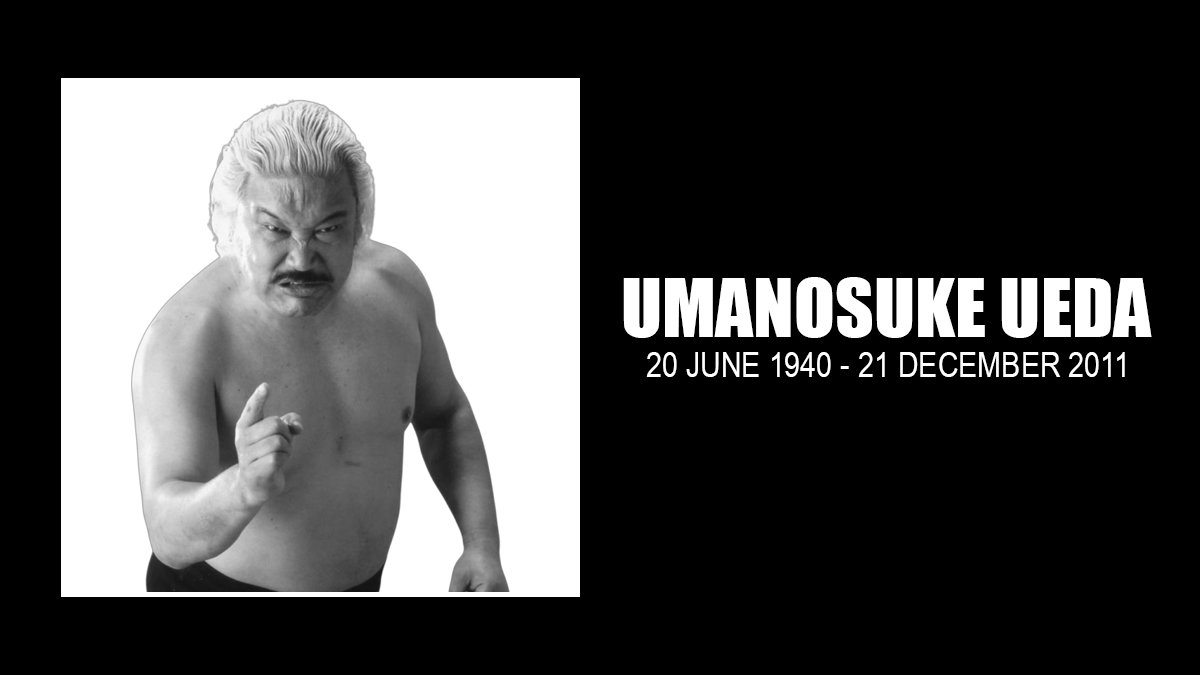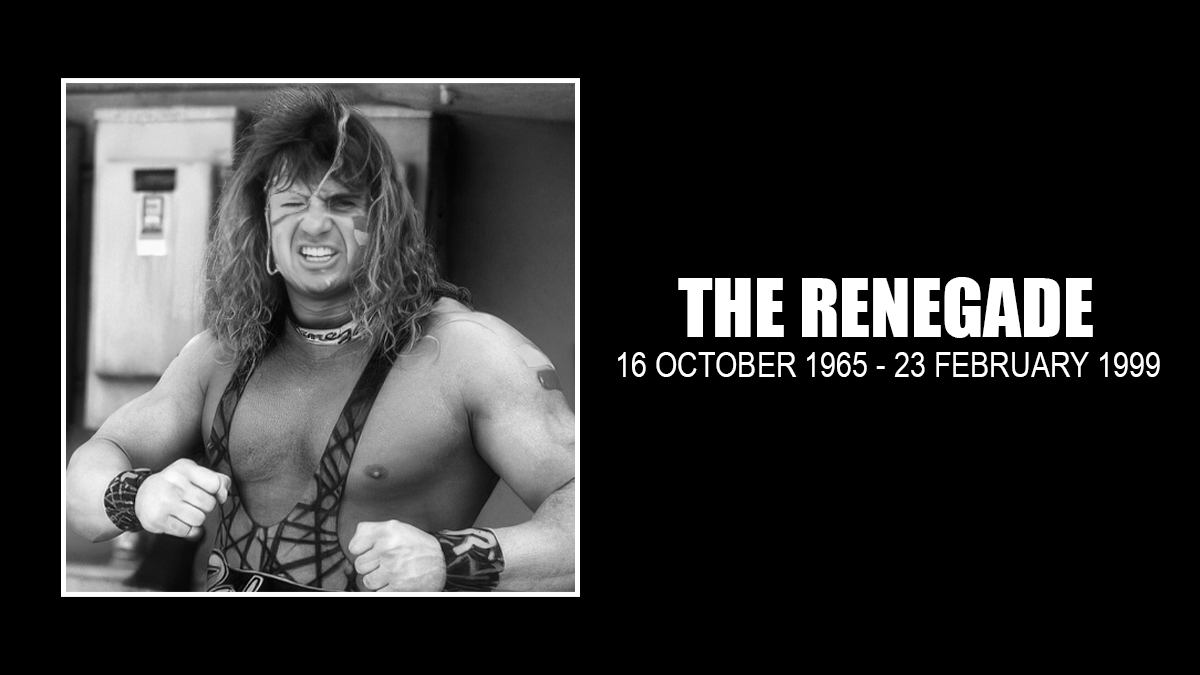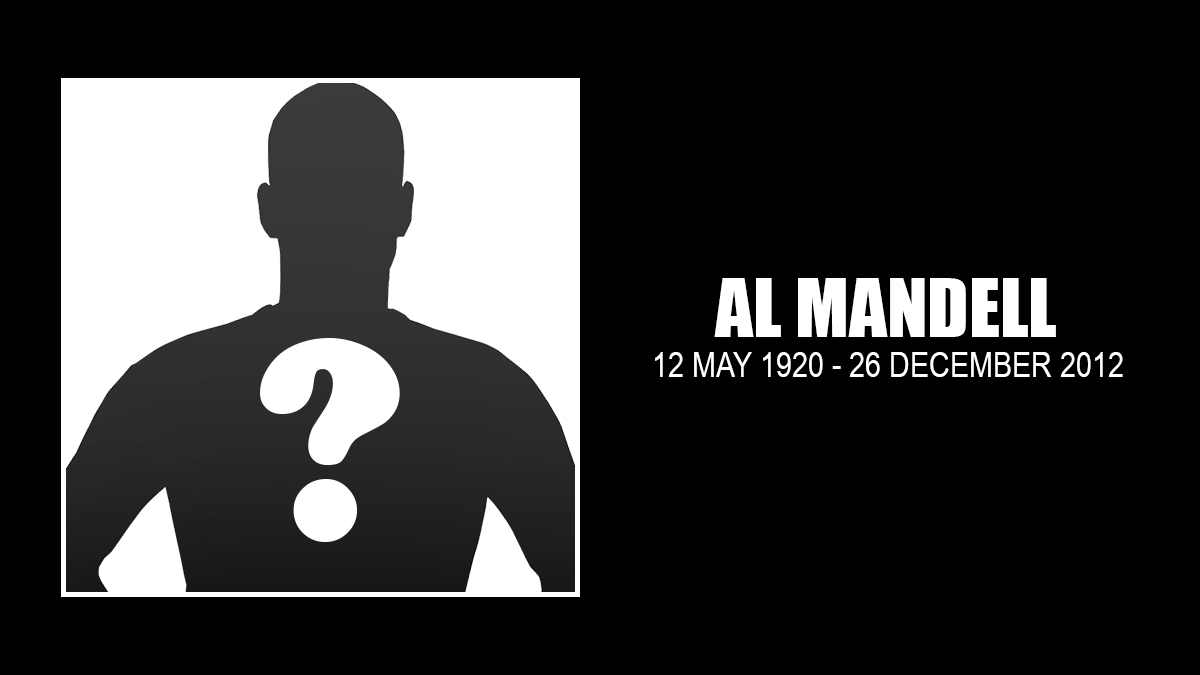Randy “Macho Man” Savage, one of the top wrestling stars of the last quarter-century, died this morning in a single-car accident in Florida after suffering an apparent heart attack.
News accounts reported that Savage was driving with his wife Lynn at about 9:25 a.m. when he lost control of his 2009 Jeep Wrangler which crossed a median in Largo, Fla. and struck a tree head-on.
Savage was transported to Largo Medical Center, where he died of his injuries, according to the website TMZ.com, which confirmed the incident with Savage’s brother Lanny Poffo.
A world champion in both the then-WWF and World Championship Wrestling, Savage kept a relatively low profile in recent years since he phased out his active career in 1999, though he appeared with TNA in 2004. His colorful garb and gravely signature cry of, “Oh, yeaaaah” made him one of the most recognizable figures in the sport through the 1980s and 1990s.
“He was all business at all times. He had his gimmick down. He’s was the most imitated man in show business at the time, `Oh, yeaahh’… everybody does him. He made himself unique,” Lanny Poffo said, reflecting on his brother in 2006.
Savage was born Randall Mario Poffo on November 15, 1952 in Columbus, Ohio, which was the base at the time for father Angelo, a top heel wrestler of the 1950s. He played catcher at Downers Grove High School in Illinois, and signed after an open tryout with the St. Louis Cardinals organization in 1971.
He spent four years in the minors, never rising above Class A ball, though he made the lower-level Gulf Coast League All-Star team in 1972, batting .274 in 52 games. The following season, the natural right-hander tore a muscle in his throwing arm and tried to teach himself to throw left-handed. He hooked on with the Cincinnati Reds affiliate in Sarasota, Fla., hitting .232 with nine home runs. After the Reds released him, he had a brief stint with the Chicago White Sox organization before retiring in 1975.
Baseball’s loss was wrestling’s gain. Savage hit the iron, guzzled milkshakes and beefed up to 230 pounds in 1976, up from his baseball playing weight of 175 pounds. “”I’ve pumped the weights and forced fed myself a high protein diet to get up to 230 and I want to get to 240,” he told a Tampa sportswriter about his decision to follow in his dad’s footsteps.
Savage immediately became a featured attraction in Angelo Poffo’s outlaw International Championship Wrestling promotion, which started running in Kentucky and Tennessee in 1978. “He was talented. I didn’t think about it really, because he was with his dad, and we were running this little opposition,” Bob Roop recalled for The Pro Wrestling Hall of Fame: The Heels. “He was developing the act, using the voice, the gravel-in-the-throat voice, the body language and all that. He was kind of just starting out on it. It was interesting enough, and his work in the ring was decent.”
Rip Rogers praised Savage for taking him under his wing in the Maritimes and ICW, even though the two were about the same age. “Randy Savage was so far ahead of everybody, so far ahead of everybody. He used to carry me in the Maritimes for full 30-minute matches, and I didn’t know how to tie my boots.”
One of the most memorable aspects of Savage’s work for his dad was the Poffo family’s continued threats to bust up shows run by long-time Tennessee stalwarts Jerry Jarrett and Jerry Lawler. In response, the established company tried to remove ICW shows from TV. At the height of the interpromotional rivalry, Lance Russell, the long-time voice of Memphis wrestling, took co-announcer Dave brown and their wives to a show in Lexington, Ky.
“Dave and Margaret came with us, and we pull up in the lot behind Rupp Arena, and I hear this, `Hey, Russell, where you going to get us kicked off next?’ Russell said. “They were going to buy tickets, come in, and jump up in the ring. At least that was what the assumed thing. They tried to get Rupp Arena to where they had security to protect against it.”
Memphis manager Jimmy Hart first met Savage when he was wielding a baseball bat at his car in Lexington. “He had some other wrestlers with him, because at that particular time, they were running opposition to us on Channel 24 in Memphis. Every week, they would challenge everybody,” Hart said. “I was getting out of the car, and I had Killer Karl Krupp with me and Dream Machine. We got out of the car, and Krupp said, ‘Oh my God, there’s Randy Savage! My God!’ We got out, and he says, ‘Jimmy Hart, let me tell you, tell Jerry Lawler that I want him with the utmost intensity.'” Eventually, the promotions saw big money in continuing the rivalry in a friendlier manner.
Hart was instrumental in getting Savage into the WWF, and on June 17, 1985, Savage, who was selling Herbalife part-time to make ends meet, got the call to go to New York.
“That’s the day Vince McMahon guaranteed me an opportunity, a shot that if I did well, he would give me my chance at wrestling in the main events, and he was true to his word. I got lucky that the people identified with me, my style, my rebel style, my Slim Jim,” he told IGN Sports in 2004.
In the WWF, Savage used real-life wife Elizabeth Hulette, whom he’d married less than seven months before, as his manager. His costumes were as overstated and psychedelic as Hulette’s were refined and demure. The two had a stormy relationship off-camera, and Savage was known for nearly obsessive control of his wife, whom he divorced in 1992.
Still, “Macho Man” was about the biggest thing in wrestling, and his flying elbow drop off the top rope became a signature move. His match against Ricky Steamboat at WrestleMania II was a show-stealer and is still regarded as one of the greatest matches in WWE history. Typical of Savage’s approach to life and wrestling, he insisted Steamboat pot out every step of the match.
“Savage was the kind of guy who liked every single step of his match to be completely choreographed – every step,” Steamboat told SLAM! Wrestling in 2003. “What we would do every night if we were in the same town, he would either meet at my room or I would meet at his room, and we’d go through the match. He’d go, ‘OK, I am at step 227; tell me the rest of the match.'”
Savage became top dog in the promotion in 1988, when he won a tournament at WrestleMania IV in Atlantic City, N.J., to become world champion. He held the belt for more than year, becoming so iconic that his previous status as a heel didn’t mean that much to fans or fellow workers.
“He was all business at all times. He had his gimmick down. He was the most imitated man in show business at the time. `Oh, yeaahhh’ … everybody does him. He made himself unique,” Lanny said. “Even his hair, which was a negative, he turned it into a positive. That was just part of the thing, the wild hair and then later on, the balding hair. It fit him.”
Savage teamed with Hulk Hogan as the Mega Powers in 1987 and 1988, before the duo split over Miss Elizabeth’s services in 1989, leading to a match in which Hogan regained the world title at WrestleMania IV.
He married Miss Elizabeth in an on-air ceremony during SumemrSlam in 1991, which set off a feud with Jake Roberts, but wrestled less frequently in main events until he left the WWF in 1994 for WCW. “When I came into the business, especially when I came into the WWF, he was the captain. He was the guy who kind of held the ship together. When he left, losing him was a bigger loss morale-wise than losing Hogan,” Kevin Nash told Pro Wrestling Torch in 2005.
In WCW, he was world champion there four times until 1999, and had a feud with Ric Flair, again over Miss Elizabeth, from whom he was divorced. Savage also displayed a new girlfriend, Gorgeous George (Stephanie Bellars), before he retired.
While he was one of wrestling biggest stars and a top endorser of Slim Jims, Savage’s intensity also was a turnoff for many people. “The few times I worked with him, I found him to be a Dr. Jekyll/Mr. Hyde,” said the late “Bad News” Allen Coage. “You just never knew which one he would be on any given night.” Savage had a real-life feud with Hogan that spilled over into numerous interviews and even his “Be A Man” CD.
“The only song I was involved in with writing was ‘Be A Man’, the diss to Hulk Hogan. Otherwise I just hung out with my crew and they came up with the tracks and lyrics and figured out what I was about,” he told Jason Clevett of SLAM! Upon Savage’s death, Hogan said the two, both Florida residents, had started to bury their differences in recent months.
“Randy was high maintenance, just put it that way, in my opinion,” added Sting, who was on top in WCW while Savage was headlining WWE. “But at the same time, I really liked his character. He was actually one of favorite characters, one of my favorite guys to watch. He was just entertaining. Then I loved his work in the ring. He had great matches. I wish that I could have worked with him in that day.”
That intensity is the key to believability, Savage maintained to Clevett. “Getting into the angle a million percent and having that translate in the ring is probably the secret … Wrestling is emotional you have to be into it in order to translate that to the wrestling fans, and that is what they deserve.”
Savage appeared as a villain in the first “Spider-Man” movie in 2002 as Bonesaw McGraw and has made a handful of TV appearances in recent years. “Basically, though, I’m just trying to get a life away from wrestling,” he said in 2004. “Wrestling is a passion, it’s something I have a passion for, and I don’t want to be itching so much that I want to get back into the ring.”
***
With its instant access to legions of readers, Twitter offers mourners an immediate chance to talk about the news of the day. Today, that news is the sad passing of Randy Savage.
The biggest of the big names, of course, is Hulk Hogan, who had an up and down relationship with Savage (Randy Poffo) through the years, both in and out of the ring.
The Hulkster has tweeted numerous times:
“I’m completely devastated, after over 10 years of not talking with Randy, we’ve finally started to talk and communicate. HH”
“He had so much life in his eyes & in his spirit, I just pray that he’s happy and in a better place and we miss him. HH”
“We miss him a lot. I feel horrible about the ten years of having no communication. This was a tough one. HH”
“I just pray that Randy’s happy and in a better place and we miss him. HH”
Here are some of the posts so far:
Shawn Michaels: @IAmJericho jus txt me the news. We’ve lost one of the greats!! Our prayers go out to the family & friends of Randy Savage.
The Rock Dwayne Johnson: RIP Randy “Macho Man” Savage – you were one of my childhood inspirations and heros. Strength, love and prayers to the Savage/Poffo family.
Bret Hart: I have no words to say. This one hits me hard. We lost one of the best.
John Cena: CeNation. The untimely passing of randy savage is indeed tragic. All true fans of wrestling will mourn this loss. One of the all time greats.
Jeff Jarrett: His madness. Randy is gone, but will never be forgotten. Thoughts and prayers are w the entire Poffo family.
Mick Foley: I just heard the sad news about the Macho Man. Randy Savage was one of my favorites performers, and my heart goes out to his loved ones.
Rey Mysterio: RIP Macho Man Randy Savage! Doing promotion in Seattle for Over the Limit ppv, was asked earlier today at a radio station, Who would I of loved to wrestle from back in da day? I said would of loved to hit it off in a 3ple threat, Macho Man, Ricky the Dragon, and myself!RIP RMS
SoCalVal: Saying a prayer 4 Randy Savage & his loved ones. I had the honor of working for his promotion, he was inspirational 2 us all! What a loss.
Howard Finkel: I am profoundly saddened by the passing of one of the all-time greats, Macho Man Randy Savage. My condolences go out to the Poffo family.
Trish Stratus: Rest in peace Randy-my first inspiration in the ring. My prayers & condolences to the Savage family
Rosita (Thea Trinidad): Rest in Paradise Macho Man Randy Savage.. you will be missed dearly! OHH YEEEAH!
Allison Danger: I am imagining the shenanigans Larry Sweeney and Randy Savage must already be getting into…. #ripmachoman #ripsweeney
Mark Henry: Wow family, one of my favorites is gone! Rest well (Randy savage) you will be missed. Savage vs steamboat look it up do yourself a favor family one of my favorite
Shannon Moore: I think that this biz only has a few legends. Today we lost one. I’m really feeling down about the situation. Once again RIP Macho Man
Vickie Guerrero: RIP Randy Macho Man Savage. My prayers are to your family
Natalya: My prayers are with Randy Savage and his family right now.
Christian: Sad 2 hear about “Macho Man”Randy Savage..Only met him once briefly.No doubt 1 of the best & influenced so many performers you see today RIP
Shelly Martinez: Sad news about Macho Man My prayers r with his soul and all grieving his passing 🙁
Darren Young: JUST like that! Life can end. Tell those close to ya that you love them cause ya never know! RIP Macho Man
Curt Hawkins: RIP Macho Man Randy Savage… One of wrestling’s all time greats.
Ezekiel Jackson: Whoa….just heard about macho man Randy savage…God bless the family, the wrestling world just lost one of the greatest ever…R.I.P
JTG: To one of my favorite Hall of Famers, inducted or not. Macho Man Randy Savage. R.I.P OOOOOOOOOH YEEEEEEEAH !
Jim Ross: Just heard Macho Man died this morning of a heart attack while driving his vehicle in Tampa. Condolences to all Randy Savage fans/family.
Kevin Nash: I lost a close friend today. If anybody in heaven is wondering who the cat in the ugly cowboy hat is it’s Randy. Love you Bro. Never another
Jillian Hall: So sad to hear about the macho man….RIP!
William Regal: Just heard of the passing of Randy Savage.A one of a kind great performer. RIP
Tommy Dreamer:: Randy Savage was the 1st person I saw piledrive someone thru a table. Thanks 4 all the memories. Hope u walk the aisle w/ Liz & Sherri again
Mickie James Ooh No! My childhood favorite! RIP Macho Man… *finger in the air*
Jay Lethal: R.I.P. Macho Man Randy Savage. You were amazing… Oohh yea!!!
Doug Williams: RIP #randysavage I was fortunate to see him live at his peak…
Shane Helms: Totally heartbreaking news about Randy Savage. One of my all-time favs!! So sad!! RIP Macho
FEATURED LINKS




